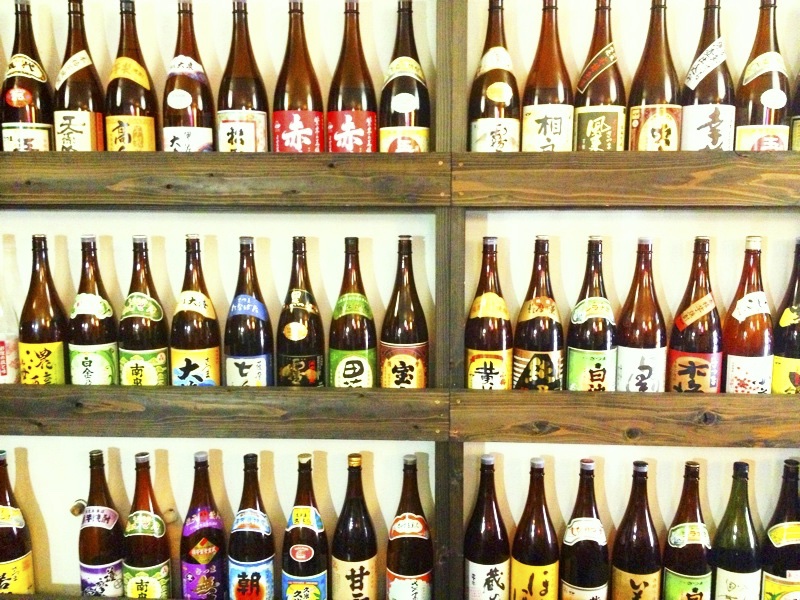Seifuku’s Imugé. What exactly is it?
Well, to answer that, we will need to travel back in time about 150 years.
During the Ryūkyū Kingdom (1429-1879), as you may remember from a previous post, the making of awamori was only permitted in what was known as the Shurisanka (首里三箇), three villages just south and southeast of Shuri (or “Shui”), the capital of the kingdom—Torihori (鳥堀), Sakiyama (崎山) and Akata (赤田). Today, you can still find a handful of distilleries in the area, including Zuisen and Shikina. Another awamori maker, Sakimoto (咲元), has since moved out of the area. All that remains of that former distillery is a simple, easy-to-miss stela. The 40 people licensed to engage in the making of awamori were given the raw materials (namely long-grained indica rice from Thailand) from the ōfu (王府), or royal administration. When the awamori was ready, they offered it to the ōfu as a form of tax. They were allowed to keep some of their product to be traded on the market.
Awamori produced outside of the Shurisanka generally began as moonshine. From the Meiji Period on (1868-), however, regulations on the brewing and distillation of alcohol were lifted. Production at local distilleries remained small and was for the most part consumed locally. Today there is a deep attachment and loyalty among Uchinānchu (Okinawans) to their shimā, or hometown’s hooch.
Because awamori made with imported rice was out of the reach for ordinary Okinawans, they made spirits of their own out of sweet potatoes and unrefined cane sugar—kokutō (黒糖) in Japanese, or muscovado. This home-brewed alcohol was known as imugé (芋下, note the Okinawan pronunciation of imo → imu).
You might think—and I must confess I did, too—that because imugé is made from sweet potatoes, it’s just another form imo jōchū, but no. Your standard otsu-rui imo shōchū is singly distilled, using sweet potatoes, kōji (a mold grown on rice that is used as a fermentation starter), rice, and yeast. With imugé, the sweet potatoes are distilled twice and then kokutō is added for a third distillation.
Although imugé was widely consumed by ordinary people in Okinawa, laws enacted which on the one hand encouraged the production of awamori outside of the original Shurisanka area also had the effect of banning home-brewing. (I will look into the reason why the laws changed in a future post.)
Seifuku (請福酒造) of Ishigaki-jima teamed up with Taragawa (多良川) of Miyako-jima and Kumesen (久米仙) of Kume-jima to bring imugé back in 2019. Produced with locally grown sugar cane and sweet potatoes, each distillery’s imugé has its own distinct flavor. All imugé, however, have the rich fragrance of sweet potato and the conspicuous sweetness of cane sugar.
Imugé can be enjoyed, neat, on the rocks, with water, hot water or soda. My father-in-law said he preferred it mixed with hot water.
25% ABV

